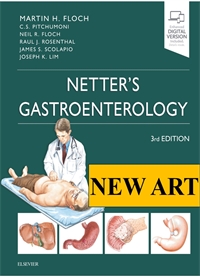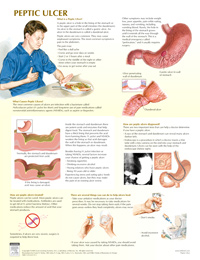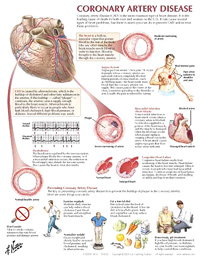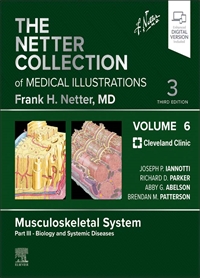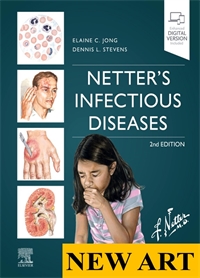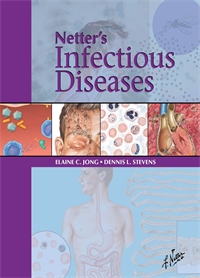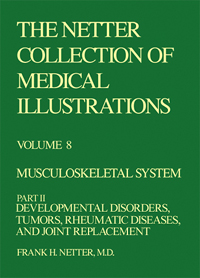Skin Disease
Diagnosis and Treatment
Author: Thomas P Habif MD, James L Campbell Jr MD MS, M Shane Chapman MD, James GH Dinulos MD and Kathryn A Zug MD
ISBN: 9780323027533
- Page 5: Occlusion of the hand
- Page 5: Occlusion of the arm
- Page 6: Steroid atrophy
- Page 7: Striae
- Page 8: Steroid rosacea
- Page 8: Atrophy and telangiectasia
- Page 8: Steroid atrophy
- Page 9: Striae of the groin
- Page 9: Steroid atrophy
- Page 9: Typical presentation of tinea of the groin
- Page 9: Tinea incognito
- Page 10: Acute eczema
- Page 11: Acute inflammation
- Page 11: Vesicles
- Page 11: Acute eczematous inflammation
- Page 11: Acute eczema
- Page 13: Classic presentation of poison ivy
- Page 14: Poison ivy - vesicles disappear
- Page 15: Poison ivy can involve wide areas
- Page 15: Poison ivy
- Page 16: Erythema and scaling
- Page 17: Erythema and scale can be extensive and suggest a diagnosis of psoriasis
- Page 17: Configuration of subacute inflammation varies
- Page 17: Plaque is dense and covered with scale
- Page 17: Atopic dermatitis
- Page 18: Subacute eczematous inflammation
- Page 19: Erythema and scale appeared in this older man with dry skin
- Page 19: Subacute eczema of the fingers
- Page 20: Weeks of scratching and rubbing with the hell has caused skin thickening
- Page 21: Chronic eczematous inflammation
- Page 21: Isolated plaque is thick with accentuation of skin lines
- Page 21: Itching about the anal area is common
- Page 21: Rubbing and scratching has thickened the skin
- Page 22: Localized neurodermatitis
- Page 23: The classic presentation of lichen simplex
- Page 23: Upper back is another target for repetitive scratching
- Page 23: The occipital lower scalp is possibly the most common target
- Page 25: Hand eczema - skin is very dry, cracked and painful
- Page 25: Hand eczema - dry, thick fissured hyperkeratotic
- Page 25: Hand eczema - irritant hand eczema
- Page 25: Hand eczema - constant hand washing
- Page 27: Hand eczema - scratching has caused skin thickening
- Page 27: Hand eczema - irritant contact dermatitis
- Page 27: Adult atopic patients develop chronic hand eczema
- Page 27: Irritant hand dermatitis on the palmar surfaced
- Page 28: Asteatotic eczema body areas
- Page 29: Asteatotic eczema - skin is very dry, cracked
- Page 31: Eczema - skin has split into a cracked pattern
- Page 31: Asteatotic eczema
- Page 31: Serum oozes from the fissures and dries
- Page 33: Cracks and fissures appear
- Page 33: Early stages of chapped, fissured feet
- Page 33: Chapped, fissured feet begin with erythema
- Page 34: Neosporin was used to treat seborrheic dermatitis
- Page 35: Subacute inflammation of the upper lid
- Page 37: Contact dermatitis
- Page 37: Classic presentation of poison ivy
- Page 37: Vesicles become confluent and form blisters
- Page 38: Patch testing experts rely on large numbers of different antigens for contact dermatitis
- Page 39: Allergic contact eermatitis to nickel
- Page 39: Allergic contact dermatitis to lacquer
- Page 41: Irritant contact dermatitis
- Page 43: Lip licking causers dryness and chapping
- Page 43: Lip licking for several weeks resulted in chapping with fissures
- Page 45: Inflammation may start on the fingertips
- Page 45: Patients protect these deep, painful cracks with bandage strips
- Page 45: Fingertip eczema
- Page 45: Dry skin is a constant feature of fingertip eczema
- Page 46: Spontaneous peeling of the palms
- Page 47: Some cases persist and the skin becomes red and fragile
- Page 47: Longstanding cases may not respond to treatment
- Page 48: Nummular eczema body regions
- Page 49: The most common areas are the dorsa of the hands
- Page 49: Nummular eczema may look like ringworm or psoriasis
- Page 50: Nummular eczema
- Page 51: Nummular eczema
- Page 52: The acute process ends as the skin peels
- Page 53: Pustular psoriasis
- Page 54: Prurigo nodularis body regions
- Page 55: Thick, hard nodules are typically found on the extensor surfaces of the arms and legs
- Page 55: Lesions measure 0.5-1 cm and are red to dark brown
- Page 56: Stasis dermatitis
- Page 57: Subacute eczema with erythema
- Page 57: Erythema and scale have extended onto the foot
- Page 58: Infection or irritation from washing can precipitate severe acute exacerbations
- Page 58: Inflammation has been present for months
- Page 59: Recurrent stasis dermatitis
- Page 61: The skin is diffusely red, thickened, and bound down by fibrosis
- Page 63: Stasis ulcers
- Page 65: A common appearance in children with erythema
- Page 65: Generalized infantile atopic dermatitis
- Page 65: Classic appearance of confluent papules forming plaques
- Page 67: Atopic dermatitis of the upper eyelids
- Page 67: Erythema and scale on the cheeks
- Page 67: The mother was afraid to use topical steroids
- Page 68: Papules and lichenification are characteristic of atopic dermatitis
- Page 68: Accentuation of the skin creases on the palms
- Page 69: Eczematous inflammation on the back of the hands in adults
- Page 69: Atopic dermatitis
- Page 70: Autosomal dominant ichthyosis vulgaris body regions
- Page 71: Dominant ichthyosis vulgaris
- Page 71: Sex-linked ichthyosis vulgaris
- Page 71: Dominant ichthyosis
- Page 71: Patient has severe dry skin
- Page 72: Upper arm is the most common site to find keratosis pilaris
- Page 73: Keratosis pilaris
- Page 73: Keratosis pilaris presenting with a deep red halo
- Page 73: Infected lesions in a uniform distribution
- Page 75: Pityriasis alba
- Page 75: Pityriasis alba
- Page 77: Circumscribed, raised, edematous, red plaques involve the superficial portion of the dermis
- Page 77: Urticaria resolves spontaneously
- Page 77: Lesions occur on any skin surface
- Page 77: Plaques have become confluent on the trunk
- Page 78: Urticaria
- Page 79: Lesions may become confluent
- Page 79: Portion of the border may be reabsorbed
- Page 79: Presentation is highly variable
- Page 79: Some patients with extensive involvement have systemic symptoms
- Page 81: Dermographism
- Page 81: Dermographism is the most common form of physical urticaria
- Page 82: Angioedema body regions
- Page 83: Angioedema affects the face, lips, palms, soles, or a portion of an extremity
- Page 83: Angioedema is a hive-like swelling
- Page 83: Angioedema
- Page 85: A single small brown macule
- Page 85: A ffew to many slightly elevated plagues
- Page 85: Stroking a lesion produces a wheal
- Page 86: Urticaria pigmentosa
- Page 87: Urticaria pigmentosa
- Page 88: Pruritic urticarial papules and plaques of pregnancy body regions
- Page 89: Lesions begin as red papules
- Page 89: The abdomen is often the initial site of involvment
- Page 89: Lesions spread in a symmetric fashion
- Page 90: Acne body regions
- Page 91: Open comedones (blackheads)
- Page 92: Closed comedone (whiteheads)
- Page 93: Papular acne
- Page 93: Pustular acne
- Page 93: Cystic acne
- Page 93: Cystic acne
- Page 94: Parents often think that keratosis pilaris on the cheeks in acne
- Page 95: Papulopustular acne of moderate intensity
- Page 95: Cystic acne
- Page 95: Papulopustular and comedone acne
- Page 95: Acne can evolve quickly and scar
- Page 95: Papulopustular acne of moderate intensity
- Page 95: Milia are microcysts
- Page 96: Perioral dermatitis body regions
- Page 97: Pinpoint pustules
- Page 97: Pinpoint papules and pustules similar to those seen next to the nostrils
- Page 97: Group V topical steroids
- Page 97: A classic case with the typical distribution
- Page 98: Rosacea body regions
- Page 99: Deep erythema of the nose
- Page 99: Active rosacea with pustules
- Page 100: Acne and rosacea may coexist
- Page 100: Erythema and telangiectasia
- Page 101: Steroid rosacea
- Page 101: Papules and pustules on the nose
- Page 101: Ocular complications often occur in patients with rosacea
- Page 102: Hidradenitis suppurativa body regions
- Page 103: Hidradenitis
- Page 103: Double and triple comedones are blackheads
- Page 103: Hidradenitis of the axillae
- Page 103: Hidradenitis may occur under the breasts
- Page 106: Psoriasis body regions
- Page 107: Plaque psoriasis
- Page 107: Plaque psoriasis
- Page 107: Plaque psoriasis
- Page 108: Scalp psoriasis
- Page 109: Scalp psoriasis
- Page 109: Pustular psoriasis of the soles
- Page 109: Psoriasis of the palms
- Page 109: Pustular psoriasis
- Page 110: Erythrodermic psoriasis
- Page 111: Pustular psoriasis
- Page 111: Psoriasis pitting
- Page 111: Psoriasis oil spot lesion
- Page 111: Psoriasis nail deformity
- Page 112: Psoriatic onycholysis
- Page 112: Psoriasis onycholysis and nail deformity
- Page 113: Psoriatic plaques typically clear
- Page 113: Inflammatory plaque psoriasis may be painful
- Page 113: This plaque has partially responded to clobetasol cream
- Page 114: Chronic inflammation of the palms is a difficult diagnostic problem
- Page 115: Chronic plaque psoriasis may be asymptomatic
- Page 115: Sunlight is an effective treatment
- Page 116: Seborrheic dermatitis body regions
- Page 116: Erythema and scaling
- Page 117: Scale of the lid margins occurs more often in children
- Page 117: Patients with a propensity to develop seborrheic dermatitis
- Page 117: Dense patches of quadrangular scale
- Page 117: Seborrheic dermatitis of the ears
- Page 117: Active disease in all of the characteristic areas
- Page 117: A classic presentation for seborrheic dermatitis
- Page 119: Seborrheic dermatitis
- Page 119: Very active inflammation with erythema and dense scale
- Page 119: Infantile seborrheic dermatitis
- Page 120: Grover's disease body regions
- Page 121: Glover's disease
- Page 122: Pityriasis rosea body regions
- Page 123: The first lesion is usually the largest
- Page 123: An extensive case in a typical distribution with lesions in the lower abdominal region
- Page 124: Highly active disease involving the neck, trunk, and extremities
- Page 125: A ring of tissue-like scale
- Page 125: Lesions are typically concentrated in the lower abdomen and groin
- Page 126: Lichen planus body regions
- Page 127: The primary lesion is a flat-topped papule
- Page 127: Close inspection of the surface shows a lacy reticular pattern
- Page 127: White plaques are located on the buccal mucosa
- Page 127: White lacy reticular pattern is present on the glans and shaft
- Page 127: Lichen planus
- Page 128: Mucous membrane lichen planus
- Page 129: Localized lichen planus
- Page 129: Generalized lichen planus
- Page 129: Generalized lichen planus
- Page 129: Hypertrophic lichen planus
- Page 130: Lichen sclerosus body regions
- Page 131: Early lesions are ivory-colored
- Page 131: The epidermis is thin and atrophic
- Page 131: This is the classic presentation for a lesion
- Page 133: A white atrophic plaque encircles the vagina and rectum
- Page 133: The glans is smooth, white and atrophic
- Page 133: There is diffuse sclerosis of the glans and shaft
- Page 133: Clerosis is limited to the glans
- Page 134: Pityriasis lichenoides body regions
- Page 135: Crops of papules
- Page 135: Lesions in children are vesicular or pustular
- Page 136: Impetigo body regions
- Page 137: Bullous impetigo
- Page 137: A tinea-like scaling border
- Page 137: Impetigo occurs most often on the face
- Page 138: Pustules and round plaques with peripheral crust
- Page 139: A thick, honey-yellow, adherent crust
- Page 139: Widespread dissemination followed 3 weeks of treatment
- Page 140: Excoriation of insect bites
- Page 140: This patient had molluscum contagiosum
- Page 141: Bullous impetigo
- Page 141: A bullous rim extened slowly for weeks
- Page 142: Cellulitis body regions
- Page 143: Cellulitis of the pinna
- Page 144: Cellulitis is characterized by erythema, edema and pain
- Page 145: Cellulitis
- Page 145: Cellulitis
- Page 145: Perianal cellulitis
- Page 146: Erysipelas body regions
- Page 147: Recurrent episodes of infection
- Page 147: Erysipelas
- Page 148: Folliculitis body regions
- Page 149: Folliculitis is inflammation of the hair follicle
- Page 149: Staphylococcal folliculitis
- Page 151: Pseudofolliculitis
- Page 151: The problem is more severe in the neck area
- Page 151: Pseudofolliculitis is difficult to manage
- Page 153: Acne keloidalis
- Page 153: Acne keloidalis presents as hard papules
- Page 154: Furuncles and carbuncles body regions
- Page 155: Boils (furuncles) are present on the buttock
- Page 156: A furuncle has rapidly evolved in a plaque of atopic dermatitis
- Page 157: The abscess either remains deep and reabsorbs
- Page 157: A single lesion on the finger
- Page 158: Pseudomonas folliculitis body regions
- Page 159: Occlusion and superhydration of the stratum
- Page 159: About 48 hours after the patient used a contaminated whirlpool
- Page 159: The rash may be a follicular, maculopapular, vesicular, pustular
- Page 161: Otitis externa
- Page 161: Pseudomonas cellulitis
- Page 161: Malignant external otitis
- Page 165: Treponema pallidum
- Page 166: Primary syphilis
- Page 166: Primary syphilis
- Page 167: Secondary syphilis
- Page 169: The lesions of secondary syphilis
- Page 169: Secondary syphilis
- Page 169: Secondary syphilis
- Page 171: Several small, painful ulcers
- Page 171: The ulcers have coalesced
- Page 171: Wright's stain of purulent material of the base of the ulcer
- Page 172: Wart at the urethral meatus
- Page 172: Warts spread rapidly over moist areas
- Page 173: These warts are similar in appearance to common warts
- Page 173: Multiple discrete warts on the shaft of the penis
- Page 174: Genital warts are pale pink
- Page 174: Pearly penile papules
- Page 174: A large cauliflower-like wart projects from the vagina
- Page 174: Warts in the anal area may be numerous and very large
- Page 175: Anal warts are often numerous and very large
- Page 175: Many small warts may be found in the analy area
- Page 176: Primary herpes simplex
- Page 177: Tzanck smear
- Page 177: Primary herpes simplex
- Page 177: Primary herpes simplex
- Page 178: Recurrent herpes simplex
- Page 178: Recurrent herpes simplex
- Page 179: Recurrent herpes simplex under the foreskin
- Page 179: Recurrent herpes simplex
- Page 181: Phthirus pubis (pubic louse or craf louse)
- Page 181: Pediculosis pubis
- Page 182: Molluscum contagiosum body regions
- Page 183: Lesions are usually discrete
- Page 183: Close observation of individual lesions
- Page 183: Molluscum are difficult to see through pubic hair
- Page 184: Molluscum are commonly found in the genital area in children
- Page 185: Molluscum are commonly found in the pubic are in adults
- Page 185: A single legion became inflamed
- Page 185: Molluscum spread rapidly
- Page 186: Wart body regions
- Page 187: Warts form cylindric projections
- Page 187: Digitate wart
- Page 187: Warts remain confined to the epidermis
- Page 187: Thrombosed black vessels
- Page 188: Warts on hands are the most common area
- Page 188: Filiform and digitate warts
- Page 188: Warts on the palms
- Page 188: Confluent warts
- Page 189: Warts are frozen until the ""freeze front"" extends for about 1-2 mm beyond the growth
- Page 189: Warts blister a day or two after freezing
- Page 189: Large blisters form on back of hands
- Page 189: Wart virus spread to the edge of the blister
- Page 190: Warts are often grouped and are easily spread by scratching
- Page 190: Flat warts body regions
- Page 191: Flat warts are pink, light brown, or light yellow
- Page 191: The face is a commonly involved site
- Page 192: Plantar warts frequently occur at points of maximal pressure
- Page 192: ""Kissing lesions.""
- Page 193: Wart that has little callus on the surface
- Page 193: Care should be used when removing the callus
- Page 194: Molluscum contagiosum body regions
- Page 195: Inoculation around the eye
- Page 195: Molluscum contagiosum
- Page 195: Lesions spread to inflamed skin
- Page 195: Molluscum
- Page 197: It is common to see erythema and scaling
- Page 197: Several warts become inflamed
- Page 199: Primary herpes simplex infection
- Page 199: Recurrent herpes
- Page 199: Recurrent infection
- Page 199: Recurrent infection
- Page 200: Recurrent herpes
- Page 200: Recurrent herpes
- Page 201: Recurrent herpes
- Page 201: Recurrent herpes
- Page 202: Recurrent herpes on the finger
- Page 203: Eczema herpeticum
- Page 204: The lesion starts as a 2-4 mm red papule
- Page 207: Vesicles become umbilicated and cloudy
- Page 208: Lesions of different stages
- Page 209: Numerous lesions on the trunk
- Page 209: Lesions present in all stages
- Page 211: The vesicles vary in size
- Page 211: Vesicles either umbilicate or rupture
- Page 211: A crust forms
- Page 213: A large group of vesicles
- Page 213: The eruption begins with red swollen plaques of various sizes
- Page 213: Vesicles arise in clusters from the red base
- Page 213: Herpes zoster may involve any dermatome
- Page 213: Sacral zoster
- Page 215: Ophthalmic zoster
- Page 215: Ophthalmic zoster
- Page 215: Varicella zoster of the geniculate ganglion
- Page 215: A classic presentation of grouped vesicles and crusts
- Page 217: Cloudy vesicles with red halos
- Page 219: Cloudy vesicles with red halos
- Page 219: Pale white oval vesicles
- Page 221: The uncircumcised penis
- Page 221: Candida balanitis
- Page 221: Infection and inflammation
- Page 223: Intense erythema
- Page 223: Diaper dermatitis
- Page 223: An artificial intertriginous area
- Page 225: Skinfolds contain heat and moisture
- Page 225: Pustules form
- Page 226: A shallow to deep fissure is commonly found in groin intertrigo
- Page 226: Intertrigo in the groin
- Page 227: Candidiasis
- Page 227: Candidiasis
- Page 228: Tinea versicolor body regions
- Page 229: An extensive eruption in a dark-skinned person
- Page 229: Lesions begin as multiple small circular macules
- Page 230: Tinea versicolor
- Page 231: Classic presentation of tinea versicolor
- Page 231: Lesions may be hyperpigmented
- Page 231: A powdery scale that may not be obvious on inspection
- Page 231: Tinea versicolor
- Page 232: Pityrosporum folliculitis body regions
- Page 233: Pityrosporum folliculitis
- Page 235: Distal subungual onychomycosis
- Page 235: Distal subungual onychomycosis
- Page 236: Distal subungual onychomycosis
- Page 236: Distal subungual onychomycosis
- Page 237: White superficial onychomycosis
- Page 237: White superficial onychomycosis
- Page 237: Proximal subungual onychomycosis
- Page 237: Proximal subungual onychomycosis
- Page 239: Patients lick and moisten the area in an attempt to prevent cracking
- Page 239: Chronically inflamed surfaces become infected with a mixed flora of yeast and bacteria
- Page 239: This elderly patient experiences recurrent inflammation from saliva
- Page 239: Fissures have formed in the valleys of the skin creases
- Page 241: A very characteristic pattern of inflammation is the active border of infection
- Page 241: Scale is obtained by holding a #15 surgical blade
- Page 243: Dermatophytes
- Page 243: Hyphae
- Page 245: Interdigital tinea pedis (toe web infection)
- Page 245: Interdigital tinea pedis (toe web infection)
- Page 245: Tinea of the soles
- Page 247: Classic ringworm pattern of fungal infection
- Page 247: Erthema and scale exted onto the sides of the foot
- Page 247: The classic presentation of hand and foot eczema
- Page 248: A half-moon-shaped plaque forms
- Page 249: The entire surface of this lesion is dry and scaling
- Page 249: The ringworm pattern of infection
- Page 249: The ringworm pattern of infection
- Page 250: Inflammatory lesions
- Page 251: Round annular lesions
- Page 251: Tinea may be asymptomatic or itchy
- Page 251: Tinea incognito
- Page 252: Plaques covering a wide area appear to be eczema
- Page 252: Tinea can occur on the face and look like eczema
- Page 252: Round annular lesions
- Page 252: Classic ringworm pattern of infection
- Page 253: Ringworm pattern of infection
- Page 253: Tinea incognito
- Page 253: Ringworm of the face is not common
- Page 253: Large plaque was diagnosed as psoriasis
- Page 254: Tinea of the dorsal aspect of the hand
- Page 255: Tinea of the palms
- Page 255: Tinea incognito
- Page 255: Ringworm pattern of infection
- Page 256: Tinea incognito
- Page 257: Tinea incognito
- Page 257: Tinea incognito
- Page 257: Tinea incognito
- Page 259: Inflammatory tinea capitis
- Page 259: Tinea of the scalp
- Page 259: Inflammatory tinea capitis (kerion).
- Page 261: Scale and pustules may be seen
- Page 261: Non-inflammatory lesions
- Page 263: Tinea begins insidiously with a small group of follicular pustules
- Page 263: Superficial infection
- Page 263: Deep follicular infection
- Page 265: Viral exanthems and drug rashes
- Page 265: Viral exanthems
- Page 265: Symmetrical eruption of sudden onset
- Page 266: Numerous pale pink, almond-shaped macules
- Page 267: Pale pink macules
- Page 268: Net-like pattern of erythema
- Page 269: Facial erythema
- Page 271: The hands become red and swollen
- Page 272: Kawasaki syndrome
- Page 274: Cutaneous drug reactions body regions
- Page 279: Maculopapular eruption
- Page 279: Erythema multiforme
- Page 279: Urticarial eruption
- Page 280: Acute generalized exanthematous pustulosis
- Page 280: Acute generalized exanthematous pustulosis
- Page 281: Fixed drug eruption
- Page 281: Photosensitivity drug eruption
- Page 281: Photosensitivity drug eruption
- Page 281: Classic vieral, generalized, symmetrical, maculopapular eruption
- Page 284: Erythema multiforme body regions
- Page 285: A dusky red macule or urticarial papule
- Page 285: Target regions for urticaria and drug eruptions
- Page 287: Severe bullous form
- Page 287: Skin lesions are flat atypical targets
- Page 289: Shedding of full-thickness epidermis
- Page 289: Wrinkling with slight pressure in toxic epidermal necrolysis
- Page 290: Erythema nodosum body regions
- Page 291: Red node-like swelling in the characteristic distribution
- Page 291: Lesions begin as red node-like swellings over the shins
- Page 292: Cutaneous small vessel vasculitis body regions
- Page 294: Purpura
- Page 294: Purpura found on the lower extremities
- Page 295: Purpura vary from pinpoint to several centimeters
- Page 295: A few to numerous discrete, purpuric lesions
- Page 295: Lesions are most often found on the legs
- Page 296: Henoch-Schonlein purpura body regions
- Page 297: Henoch-Schonlein purpura
- Page 298: Schamberg's Disease body regions
- Page 299: Asymptomatic, irregular patches of varying shapes on the lower extremities
- Page 299: Lesions begin as asymptomatic, localized areas of cutaneous hemorrhage
- Page 299: Changes are more subtle and resemble the hyperpigmentation
- Page 299: Distribution is haphazard
- Page 300: Sweet's Syndrome body regions
- Page 301: Acute, tender, erythematous plaques, nodes
- Page 302: Skin lesions are tender erythematous papules and plaques
- Page 302: Atypical Sweet's syndrome
- Page 304: Scabies body regions
- Page 305: Burrow
- Page 305: Burrow
- Page 305: Vesicles and papules
- Page 305: Secondary lesions
- Page 306: Sarcoptes scabiei
- Page 306: Elderly man with scabies
- Page 307: Secondary lesions
- Page 307: Secondary lesions dominate the clinical picture
- Page 307: Infants can develop vesicles and pustules
- Page 307: Infant with 3 month infestation
- Page 308: Pediculosis capitis
- Page 309: Eyelash infestation
- Page 309: Body lousse
- Page 311: The louse egg
- Page 311: Pthirus pubis (pubic or crab louse)
- Page 313: Myiass
- Page 313: Large maggot
- Page 313: Xylocaine injected into the cavity to aid in extracting the maggot
- Page 314: Large local allergic reaction
- Page 315: Large urticarial plaque
- Page 315: Severe local reaction with necrosis
- Page 315: Huge urticarial plaque
- Page 317: Black widow
- Page 317: Severe muscle pain sign of envenomation
- Page 318: Brown recluse spider
- Page 319: Distribution of brown recluse spider
- Page 319: Violin-shaped or fiddle-shaped marking on spider's back
- Page 320: Erythema migrans
- Page 321: Ticked Off
- Page 321: Lesion is circular
- Page 323: Rash is reported in 83% of cases
- Page 323: Generalized petechial eruption
- Page 323: Reported cases of Rocky Mountain spotted fever, 1990
- Page 324: Flea bites in a child were excoriated and became infected
- Page 325: Fleas
- Page 325: Flea bites
- Page 325: Flea bites are typically clustered about the lower leg
- Page 326: Cutaneous larva migrans body regions
- Page 327: Trapped larva
- Page 327: 1 cm larva
- Page 327: Many larvae may be present in the same area
- Page 327: During larval migration
- Page 328: Fire ant stings
- Page 332: Dermatitis herpetiformis body regions
- Page 333: Vesicles are symmetrically distributed
- Page 333: Herpetiform refers to the typical grouping of vesicles
- Page 333: Vesicles appear singly or in clusters
- Page 335: Symmetric distrivution of vesicles
- Page 335: Vesicles and bullae are present in this generalized eruption
- Page 336: Pemphigus vulgaris body regions
- Page 337: Oral erosions
- Page 337: Flaccid blisters rupture easily
- Page 338: Pemphigus foliaceus body regions
- Page 339: The disease begins gradually on the face
- Page 340: Bullous pemphigoid body regions
- Page 341: Pemphigoid
- Page 341: The eruption is often generalized
- Page 342: Lupus erythematosus body regions
- Page 343: Chronic cutaneous lupus of the scalp
- Page 343: Keratin accumulates on the surface causing scale
- Page 344: The face is themost commonly affected area
- Page 345: Follicular plugs
- Page 345: Discoid LE
- Page 345: Red scaling plaques
- Page 345: Lesions in African Americans
- Page 345: Discoid lupus
- Page 347: Subacute cutaneous lupus erythematosus
- Page 349: Acute lupus erythematosus
- Page 351: Violaceous erythema
- Page 351: Heliotrope rash
- Page 352: Violaceous papules
- Page 353: Violaceous erythema and scale
- Page 355: The skin is tightly bound down
- Page 356: Scleroderma
- Page 357: Telangiectasias
- Page 357: Scleroderm
- Page 359: Morphea
- Page 360: Sun-damaged skin, actinic-damaged skin, photoaging body regions
- Page 361: Course wrinkling
- Page 361: Solar elastosis
- Page 362: White, round 2-3mm papules (milia)
- Page 362: Coarse, deep wrinkles radiate from the lateral margin of the eye
- Page 363: Bleeding occurs with the slightest trauma to the sun-damaged surfaces
- Page 363: Poikiloderma of Civatte
- Page 363: Sun-induced wrinkling on the back of the neck
- Page 364: Polymorphous light eruption body regions
- Page 365: The papular type is the most common form
- Page 365: The papulovesicular type
- Page 366: Small papules are disseminated
- Page 367: The papulovesicular type
- Page 367: Papules are localized and symmetrically distributed
- Page 368: Porphyria cutanea tarda body regions
- Page 369: The clinical features in order of frequency are blistering in sun-exposed areas
- Page 370: Porphyria cutanea tarda
- Page 371: Porphyria cutanea tarda
- Page 371: White milia form during the healing process
- Page 372: Vitiligo body regions
- Page 373: The margins of the lesions may become more hyperpigmented
- Page 373: Examine the axillae, groin and anal area
- Page 374: The genitalia, axillae, and anal areas
- Page 374: Vitiligo on the back of the hand
- Page 375: Treatment with either PUVA or topical steroids
- Page 375: Loss of pigment may be partial or complete
- Page 375: Several areas of depigmentation
- Page 376: Idiopathic guttate hypomelanosis body regions
- Page 377: Idiopathic guttate hypomelanosis
- Page 378: Lentigo, juvenile lentigo, solar lentigo body regions
- Page 379: Reactive hyperplasia of melanocytes
- Page 379: The lesions vary in size
- Page 381: Labial lentigines
- Page 381: Solar lentigo
- Page 381: Lentigo (liver spots) occurs in sun-exposed areas
- Page 381: A biopsy should be taken from any lentigo
- Page 383: The pigmentation develops slowly
- Page 383: The forehead, malar eminences, upper lip
- Page 384: Seborrheic keratosis body regions
- Page 386: Rough-surfaced seborrheic keratoses
- Page 386: Rough-surfaced seborrheic keratoses
- Page 386: Rough-surfaced seborrheic keratoses
- Page 387: Smooth surface keratoses
- Page 387: Smooth surface keratoses
- Page 387: Smooth surface keratoses
- Page 387: Smooth surface keratoses
- Page 388: Keratoses mimicking melanoma
- Page 388: Keratoses mimicking melanoma
- Page 388: Keratoses mimicking melanoma
- Page 388: Keratoses mimicking melanoma
- Page 389: Irritated seborrheic keratoses
- Page 389: Irritated seborrheic keratoses
- Page 389: Irritated seborrheic keratoses
- Page 390: Lesions can become very large and disfiguring and resemble melanoma
- Page 390: Numerous lesions
- Page 391: Lesions are often concentrated in the presternal area
- Page 391: The number varies from less than 20
- Page 391: Lesions may be localized to the areola
- Page 392: Stucco keratoses
- Page 392: Stucco keratoses body regions
- Page 393: Stucco keratoses
- Page 394: Skin tags body regions
- Page 395: Skin tags begin as tiny, brown or skin-colored
- Page 395: Skin tags occur around the eyes
- Page 395: Skin tags start as small brown to flesh colored papules
- Page 396: Dermatofibroma body regions
- Page 397: Early lesions are elevated, hard and pink
- Page 398: Rough-surfaced seborrheic keratoses
- Page 398: New lesions are pink and elevated
- Page 399: The density of the brown pigmentation
- Page 399: Dermatofibromas retract beneath the skin surface
- Page 400: Keloids and hypertrophic scars body regions
- Page 401: A keloid extends beyond the margins of injury
- Page 401: Small multiple hypertrophic scars and keloids form
- Page 403: A keloid formed after an injury
- Page 403: Very large keloids may form in the ear lobe
- Page 404: Keratoacanthoma body regions
- Page 405: Keratoacanthoma begins as a smooth, dome-shaped, red papule
- Page 405: This lesion resembles both a keratoacanthoma
- Page 406: Keratoacanthomas
- Page 407: This large lesion was present for months
- Page 408: Nevus sebaceus body regions
- Page 409: This 12 year old boy has reached puberty and the lesion has become thicker
- Page 409: Nevus sebaceous in a 30 year old man
- Page 410: Nevus sebaceus occurs most often on the scalp
- Page 411: Hormonal changes during puberty stimulate sebaceous gland growth
- Page 411: Lesions are found on the scalp, face
- Page 412: Chondrodermatitis nodularis helicis body regions
- Page 413: During the active stage the base may become red and swollen
- Page 413: The central scale lacks the keratinous plug of a keratoacanthoma
- Page 414: Epidermal cyst body regions
- Page 415: Epidermal cysts vary in size
- Page 415: Ruptured cysts
- Page 416: Spontaneous rupture of the wall results in discharge of the soft yellow keratin
- Page 416: Giant comedones are variants of epidermal cysts
- Page 417: Epidermal cysts occur commonly on the back of the ear
- Page 418: Pilar cyst (Wen) body regions
- Page 419: Pilar cysts occur in the scalp
- Page 419: This large pilar cyst has exerted pressure against the skin
- Page 420: Sebaceous hyperplasia body regions
- Page 421: Individual lesions are made up of a cluster of yellow-white globules
- Page 421: Yellow-white papules
- Page 422: Syringoma body regions
- Page 423: The lower lids are the most common area
- Page 424: Basal cell carcinoma body regions
- Page 425: Basal cell carcinoma may appear on the ear
- Page 425: This nodular basal cell carcinoma
- Page 425: The classic presentation for nodular basal cell carcinoma
- Page 425: Nodular basal cell carcinoma
- Page 427: Nodular basal cell carcinoma
- Page 427: Pigmented basal cell carcinoma
- Page 427: Superficial basal cell carcinoma
- Page 429: Superficial basal cell carcinoma
- Page 429: Superficial basal cell carcinoma
- Page 429: Superficial basal cell carcinoma
- Page 430: The back is a common place to find superficial basal cell carcinoma
- Page 431: The cycle of growth, ulceration, and healing
- Page 431: Basal cell carcinomas
- Page 431: Morpheaform basal cell carcinoma
- Page 432: Actinic keratosis body regions
- Page 433: Pigmented actinic keratosis
- Page 433: Actinic keratosis
- Page 433: Actinic keratosis
- Page 433: Actinic keratosis
- Page 434: Actinic keratosis accumulate dense scale
- Page 434: Almost the entire surface of the nose is covered with scale
- Page 435: Actinic cheilitis
- Page 435: Actinic keratosis
- Page 435: Actinic keratosis
- Page 435: Topical chemotherapy
- Page 436: A clinical diagnosis of squamous cell carcinoma
- Page 436: Actinic keratosis on the back of the hands
- Page 437: Topical chemotherapy
- Page 437: Actinic keratosis 4 weeks after starting treatment
- Page 437: Actinic keratosis 3 weeks after treatment
- Page 438: Squamous cell carcinoma body regions
- Page 439: Squamous cell carcinoma is commonly found on the ears
- Page 439: Differentiating actinic keratosis
- Page 439: Large mass of basal cell carcinoma
- Page 439: Squamous cell carcinoma
- Page 441: Lower lip tumor
- Page 441: Clinical diagnosis of cutaneous horn
- Page 443: Diagnosis of actinic keratosis
- Page 443: Squamous cell carcinoma
- Page 444: Bowen's disease body regions
- Page 445: Bowen's disease is a slowly growing lesion
- Page 445: Diagnosis of Bowen's disease
- Page 445: Plaque of Bowen's disease
- Page 447: Analogous to Bowen's disease of the skin
- Page 447: Bowen's disease of the penis
- Page 448: Leukoplakia body regions
- Page 449: Degeneration to carcinoma
- Page 449: Leukoplakia 2 weeks after treatment
- Page 449: Leukoplakia
- Page 450: Cutaneous T cell lymphoma body regions
- Page 451: Lesions tend to remain fixed in location
- Page 451: A red psoriasis-like eruption
- Page 451: Early lesions are red with subtle scale
- Page 451: Infiltration of the entire skin
- Page 452: Necrosis and ulceration of plaques
- Page 453: Tumors develop from pre-existing palques
- Page 453: Tumors vary in size
- Page 453: The plaques vary in shape
- Page 455: Malignant cells migrate through the epidermis
- Page 455: The disease begins insidiously in one breast
- Page 455: The process appears eczematous
- Page 457: A white eroded plaque with ill-defined borders on the labia
- Page 457: The disease appears as a white-to-red, scaling or macerated
- Page 457: Three biopsies were taken before malignant cells were demonstrated
- Page 458: Cutaneous metastasis body regions
- Page 461: The most common representation of cutaneous metastasis
- Page 461: The second most common pattern of cutaneous metastasis
- Page 461: Biopsy of this hard nodule
- Page 462: Nevi, melanocytic nevi, mole body regions
- Page 463: Junctional nevi
- Page 463: Compound nevi
- Page 463: Intradermal nevi
- Page 464: Blue nevi
- Page 464: Nevus spilus
- Page 464: Spitz nevus
- Page 465: Halo nevi
- Page 465: Recurrent nevi
- Page 466: A dermal nevus with horn pearls on the surface
- Page 466: A dome-shaped smooth-surfaced papule
- Page 467: Speckled lentiginous nevi
- Page 467: A common presentation for a dermal nevus
- Page 467: Common presentation for scalp nevi
- Page 467: Dermal nevus with no pigment
- Page 467: Dermal nevus with a consistency of a wrinkled sack
- Page 468: Atypical mole synderom body regions
- Page 469: Atypical nevi
- Page 469: The ""fried egg"" pattern for an atypical nevus
- Page 471: Atypical Nevi
- Page 471: Atypical Nevi
- Page 471: Atypical Nevi
- Page 471: Atypical Nevi
- Page 472: Malignant melanoma, lentigo maligna body regions
- Page 473: Superficial spreading melanoma
- Page 473: Superficial spreading melanoma
- Page 473: Superficial spreading melanoma
- Page 473: Superficial spreading melanoma
- Page 473: Superficial spreading melanoma
- Page 474: Nodular melanoma
- Page 474: Nodular melanoma
- Page 474: Nodular melanoma
- Page 474: Nodular melanoma
- Page 474: Nodular melanoma
- Page 475: Lentigo maligna and lentigo maligna melanoma
- Page 475: Lentigo maligna and lentigo maligna melanoma
- Page 475: Lentigo maligna and lentigo maligna melanoma
- Page 475: Lentigo maligna and lentigo maligna melanoma
- Page 476: Acral lentiginous melanoma
- Page 476: Acral lentiginous melanoma
- Page 476: Acral lentiginous melanoma
- Page 481: Darkly pigmented smooth-surfaced seborrheic keratosis
- Page 481: Inflamed seborrheic keratosis
- Page 481: Rough-surfaced seborrheic keratosis
- Page 481: Inflamed seborrheic keratosis
- Page 481: Darkly pigmented rough-surfaced seborrheic keratosis
- Page 481: Rough-surfaced seborrhic keratosis
- Page 482: Pigmented basal cell carcinoma
- Page 483: Smooth seborrheic keratosis
- Page 483: Dermatofibroma
- Page 483: Hemangiomas vary in size and color
- Page 483: A bizzarre surface pattern
- Page 483: Blue nevus
- Page 483: A pigmented basal cell carcinoma
- Page 485: Congenital nevi
- Page 485: Congenital nevi
- Page 486: Hemangiomas of infancy body regions
- Page 487: Superficial hemangioma
- Page 487: Superficial hemangioma
- Page 487: Superficial hemangioma
- Page 488: Deeper lesions are skin-colored
- Page 489: This lesion is growing rapidly
- Page 489: Large, deep hemangioma
- Page 490: Venous malformations
- Page 491: Venous malformation
- Page 491: Capillary hemangioma
- Page 493: Nevus anemicus
- Page 495: Lymphangioma circumscriptum
- Page 497: Cherry angioma
- Page 497: Cherry angioma
- Page 497: Cherry angiomas increase with age
- Page 498: Angiokeratoma body regions
- Page 499: Angiokeratoma of fordyce
- Page 499: Angiokeratoma of fordyce
- Page 501: Angiokeratoma corporis diffusum
- Page 501: Angiokeratoma corporis diffusum
- Page 502: Venous lake body regions
- Page 503: Venous lakes
- Page 503: Venous lakes are dark
- Page 503: Venous lakes are common on sun-exposed surfaces
- Page 504: Pyogenic granuloma body regions
- Page 505: Pyogenic granuloma
- Page 505: Pyogenic granuloma
- Page 506: Kaposi's Sarcoma body regions
- Page 507: Kaposi's sarcoma
- Page 507: Classic Kaposi's sarcoma
- Page 509: Classic Kaposi's sarcoma
- Page 509: AIDS-related Kaposi's sarcoma
- Page 511: Hereditary hemorrhagic telangiectasia
- Page 511: Generalized essential talangiectasia
- Page 513: Unilateral nevoid talangiectasia syndrome
- Page 513: Telangiectasias of CREST syndrome
- Page 513: Telangiectasias of CREST syndrome
- Page 514: Spider angioma body regions
- Page 515: Central vessel with radiating smaller vessels
- Page 515: Spider angiomas
- Page 517: Progression and various patterns of hair loss classified by Hamilton
- Page 519: Evolution of the femal type of androgenetic alopecia
- Page 522: Alopecia areata body regions
- Page 523: Alopecia areata
- Page 524: Alopecia areata may involve the eyelashes
- Page 525: The ophiasis pattern
- Page 525: Alopecia areata
- Page 526: The favorite site is the easily reached frontoparietal region
- Page 527: The affected area has an irregular angulated border
- Page 527: Several short broken hairs
- Page 528: Longitudinal ridging
- Page 528: Ridging and beading is an aging change
- Page 529: Habit tic deformity
- Page 529: Onycholysis
- Page 529: Onycholysis
- Page 530: Pitting is the most characteristic sign of psoriasis
- Page 530: Habit-tic deformity
- Page 531: Psoriasis
- Page 531: Psoriasis of the nail unit
- Page 531: Psoriasis (oil spot lesion)
- Page 532: Acute paronychia
- Page 532: Acute paronychia
- Page 533: Chronic inflammation of the nail folds
- Page 533: Chronic paronychia
- Page 533: Chronic Pseudomonas infection
- Page 533: Pseudomonas with green pigmentation
- Page 534: Trauma to the nail
- Page 534: Ingrown nail
- Page 535: Accumulation of blood occurs under the nail plate
- Page 535: Onychomycosis
- Page 535: White bands are a common finding
- Page 536: Distal nail splitting
- Page 536: Beau's lines
- Page 537: A junction nevus
- Page 537: Mucous cysts
- Page 537: Mucous cyst
- Page 538: Distal subungual onychomycosis
- Page 538: Nail bands
- Page 538: Hutchinson's sign
- Page 538: Distal subungual onychomycosis
- Page 539: White superficial onychomycosis
- Page 539: Distal subungual onychomycosis
- Page 539: Distal subungual onychomycosis
- Page 540: Proximal subungual onychomycosis
- Page 547: Dermatomyositis
- Page 547: Sign of Leser-Trelat
- Page 549: Sweet's syndrome
- Page 551: Glucagonoma syndrome
- Page 553: Familial multiple cancer syndromes
- Page 555: Cowden syndrome
- Page 556: Acanthosis nigricans body regions
- Page 557: Most common site of involvement is the axilla
- Page 557: Symmetric brown thickening of the skin in the axillae
- Page 559: Tumors are usually not present in childhood
- Page 559: Tumors
- Page 559: Lisch nodules are pigmented, melanocytic
- Page 561: Caf-au-lait spots
- Page 563: Adenoma sebaceum
- Page 563: Adenoma sebaceum
- Page 565: Shagreen patch
- Page 565: Hypomelanotic macules
- Page 566: Granuloma annulare body regions
- Page 567: The borders are elevated with confluent papules
- Page 567: Granuloma annulare
- Page 567: Dense lesion that restricts range of motion of the finger
- Page 568: This plaque has been present for months
- Page 569: Granuloma annulare
- Page 569: The ankle is a common site to find granuloma annulare
- Page 570: Necrobiosis lipoidica body regions
- Page 571: The eruption begins as an oval violaceous patch
- Page 571: More than 50% of patients with this condition are generally insulin dependent
- Page 571: Chronic inflammation
- Page 572: Pyoderma gangrenosum body regions
- Page 573: The initiating lesion consists of discrete pustules
- Page 573: Differentiation from other diseases causing ulcers
- Page 574: The legs are the most common site
- Page 575: Eventually a lesion forms with multiple ulcers
- Page 575: A huge ulcer with the characteristic violaceous border





